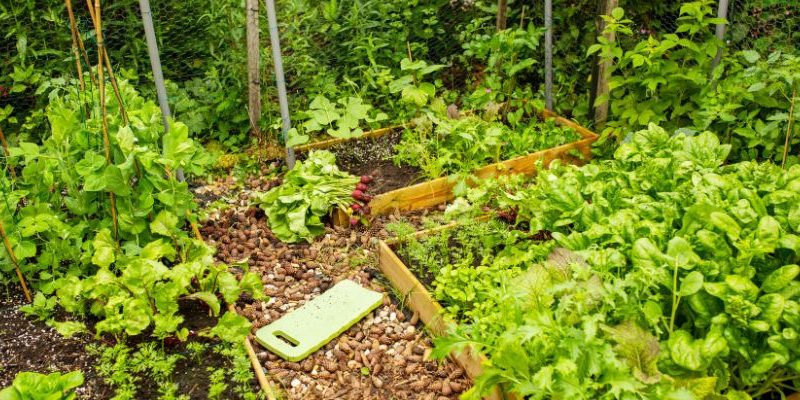In a world where sustainability is increasingly becoming a priority, the concept of drought-tolerant landscape is gaining momentum. Imagine a landscape that not only delights the eye but also provides nourishment for the body. Let’s explore the fascinating realm of edible landscaping and discover how Pristine Connections embraces this harmonious fusion of beauty and functionality.
Table Of Content
Exploring the Concept of Edible Landscaping
Blending Aesthetics with Practicality
Edible landscaping represents a harmonious marriage between traditional ornamental gardening and productive food cultivation. By strategically integrating fruit trees, vegetable gardens, and herbs into the landscape design, homeowners can enjoy the visual appeal of a traditional garden while reaping the rewards of fresh, homegrown produce.
Maximizing Space Efficiency
One of the key principles of edible landscaping is maximizing space efficiency. Through careful planning and design, even small yards or urban spaces can be transformed into productive edible gardens. Vertical gardening, container gardening, and interplanting techniques allow for the efficient use of limited space, ensuring a bountiful harvest from every square foot of land.
Enhancing Biodiversity and Resilience
By diversifying the plant palette to include edible species, edible landscaping promotes biodiversity and resilience within the ecosystem. Integrating native edible plants and heirloom varieties not only provides a diverse range of flavors but also supports local pollinators and beneficial insects, creating a balanced and sustainable environment.
The Benefits of Edible Landscaping
Fresh, Nutrient-rich Harvests
One of the most obvious benefits of edible landscaping is the opportunity to enjoy fresh, nutrient-rich produce right from your own backyard. From crisp lettuce and juicy tomatoes to fragrant herbs and succulent berries, homegrown fruits and vegetables offer unparalleled flavor and nutritional value, surpassing anything found in the supermarket.
Environmental Sustainability
Pristine Connections prioritizes environmental sustainability, and edible landscaping aligns perfectly with these values. By growing food locally and organically, edible landscapes reduce the carbon footprint associated with conventional agriculture, minimize transportation emissions, and promote soil health through natural cultivation practices.
Connecting with Nature and Community
Beyond the practical benefits, edible landscaping fosters a deeper connection with nature and community. Tending to a garden provides a sense of satisfaction and accomplishment, reconnecting individuals with the rhythms of the natural world. Sharing the bounty of a harvest with friends, family, and neighbors fosters a sense of community and strengthens social bonds.
Designing Your Edible Landscape
Planning for Success
Successful edible landscaping begins with careful planning and design. Consider factors such as sunlight exposure, soil quality, and water availability when selecting plant species and designing garden layouts. By creating a well-thought-out plan, you can maximize productivity while minimizing maintenance requirements.
Incorporating Water-wise Landscaping Techniques
Water-wise landscaping techniques are essential for the success of an edible landscape, particularly in arid climates. By incorporating principles such as drip irrigation, mulching, and rainwater harvesting, you can minimize water waste and ensure that your edible garden thrives while conserving precious water resources.
Embracing Permaculture Principles
Pristine Connections embraces permaculture principles, and edible landscaping provides an ideal opportunity to put these principles into practice. By designing integrated, self-sustaining ecosystems that mimic natural patterns, you can create a productive and resilient edible landscape that requires minimal inputs and fosters ecological harmony.
Final Wording
Edible landscaping offers a multifaceted approach to gardening that combines beauty with functionality, and sustainability with practicality. By embracing the principles of edible landscaping and drawing inspiration from Pristine Connections’ commitment to environmental stewardship, homeowners can create landscapes that not only enhance the aesthetic appeal of their surroundings but also nourish the body and soul. Whether you have a sprawling estate or a modest urban plot, there’s immense potential to cultivate beauty and abundance through the art of edible landscaping.
FAQ’s
Implementing natural pest control methods like companion planting, physical barriers, and organic repellents can help deter pests and wildlife without resorting to harmful chemicals.
Absolutely! Container gardening allows you to grow a variety of edible plants, herbs, and even dwarf fruit trees in small spaces, bringing the benefits of edible landscaping to urban environments.
Edible landscaping can be seamlessly integrated into formal garden designs by incorporating neatly edged beds or raised planters filled with a variety of edible plants arranged in symmetrical patterns or geometric shapes.
Edible flowers like nasturtiums, calendula, and pansies not only add beauty to the landscape but also provide a pop of color and unique flavors when added to salads, desserts, or infused into beverages.







